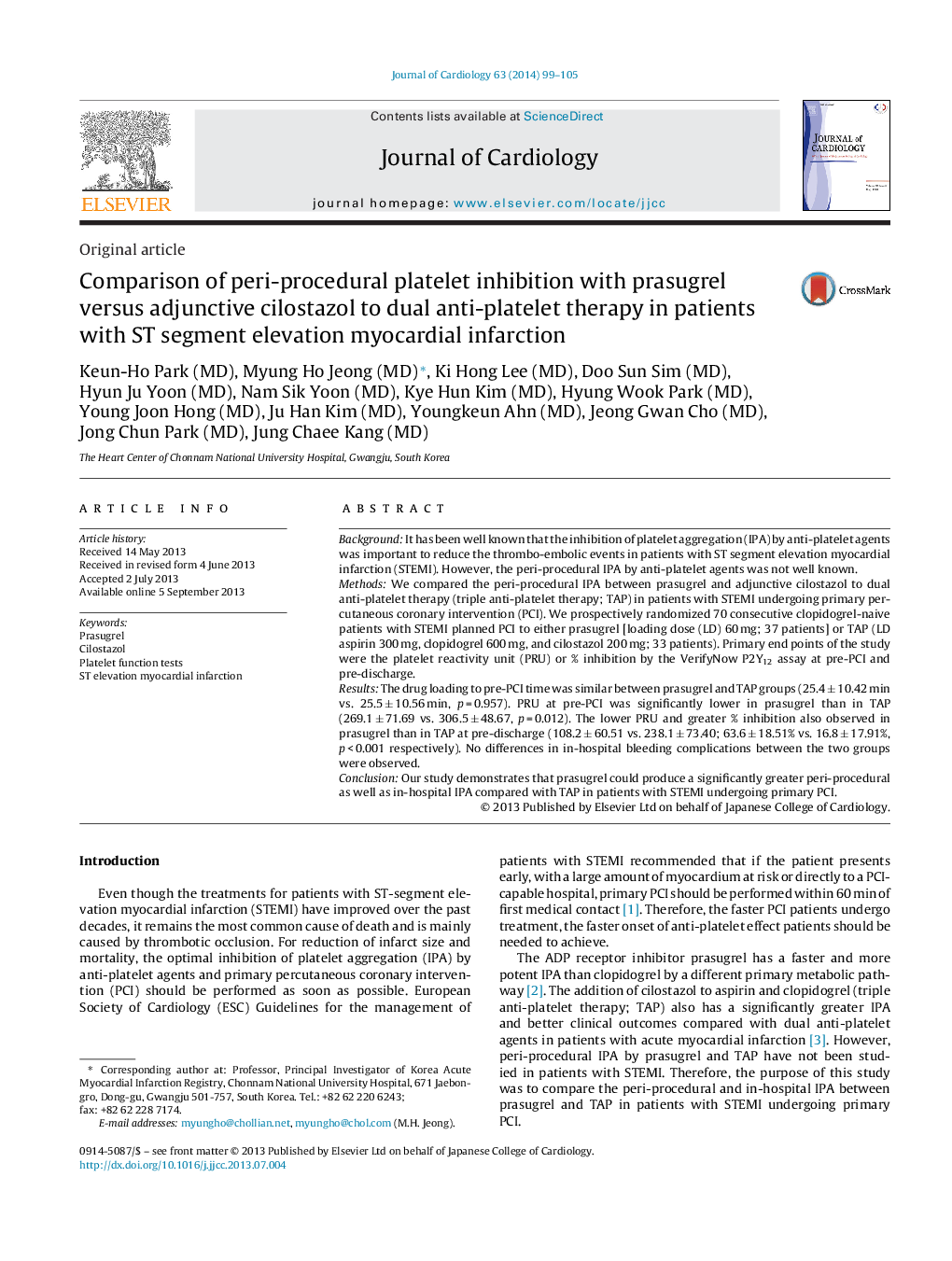| Article ID | Journal | Published Year | Pages | File Type |
|---|---|---|---|---|
| 5984119 | Journal of Cardiology | 2014 | 7 Pages |
BackgroundIt has been well known that the inhibition of platelet aggregation (IPA) by anti-platelet agents was important to reduce the thrombo-embolic events in patients with ST segment elevation myocardial infarction (STEMI). However, the peri-procedural IPA by anti-platelet agents was not well known.MethodsWe compared the peri-procedural IPA between prasugrel and adjunctive cilostazol to dual anti-platelet therapy (triple anti-platelet therapy; TAP) in patients with STEMI undergoing primary percutaneous coronary intervention (PCI). We prospectively randomized 70 consecutive clopidogrel-naive patients with STEMI planned PCI to either prasugrel [loading dose (LD) 60 mg; 37 patients] or TAP (LD aspirin 300 mg, clopidogrel 600 mg, and cilostazol 200 mg; 33 patients). Primary end points of the study were the platelet reactivity unit (PRU) or % inhibition by the VerifyNow P2Y12 assay at pre-PCI and pre-discharge.ResultsThe drug loading to pre-PCI time was similar between prasugrel and TAP groups (25.4 ± 10.42 min vs. 25.5 ± 10.56 min, p = 0.957). PRU at pre-PCI was significantly lower in prasugrel than in TAP (269.1 ± 71.69 vs. 306.5 ± 48.67, p = 0.012). The lower PRU and greater % inhibition also observed in prasugrel than in TAP at pre-discharge (108.2 ± 60.51 vs. 238.1 ± 73.40; 63.6 ± 18.51% vs. 16.8 ± 17.91%, p < 0.001 respectively). No differences in in-hospital bleeding complications between the two groups were observed.ConclusionOur study demonstrates that prasugrel could produce a significantly greater peri-procedural as well as in-hospital IPA compared with TAP in patients with STEMI undergoing primary PCI.
